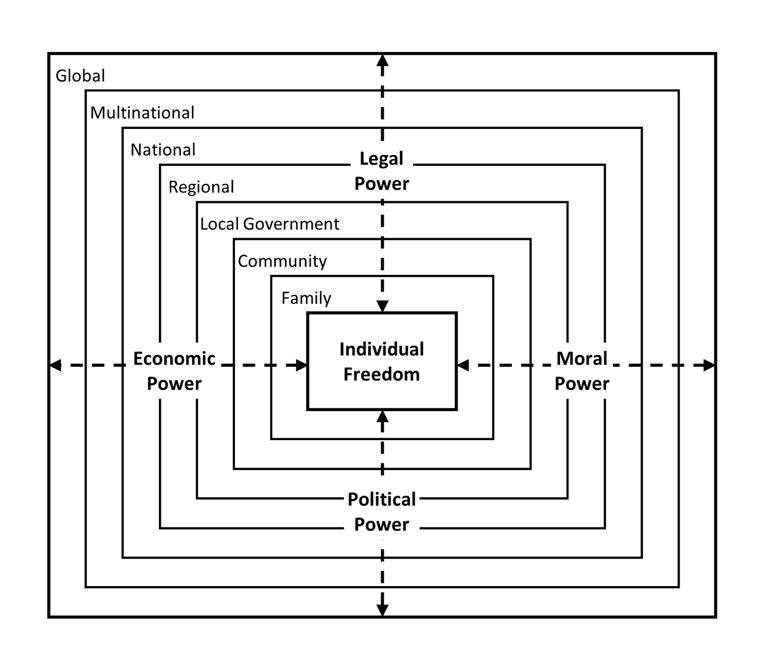2.8 Subsidiarity of Governance
Power is exerted in successive layers of subsidiarity of governance, from the family through to global organisations
Individuals exercise power, and are constrained by it, in each dimension of governance – and each dimension has its own subsidiarity, as illustrated:

The proportions of the diagram are constrained by the need for it to be readable, with the result is that it gives a misleading sense of the relative importance of each layer of subsidiarity of governance:
● Having a wider scope doesn’t imply having more power.
● A great deal of political power is concentrated at national level in the Western world, whereas multinational and global governance is much less robust.
● Whereas domains of legal and political power mostly have geographical boundaries, economic power and moral influence traverse political boundaries.
● An individual person’s influence, upon those who have been granted power, is proportionally less in the larger domains of control.
The following sub-sections explore further aspects of subsidiarity:
● Different types of power are exercised in domains whose boundaries may overlap or be diffuse (2.8.1).
● Not all power flows down through a hierarchy; some forms of authority are empowered by agreement from below. Power can flow upwards or downwards, or it can be pooled (2.8.2).
● There are limits on the degree of authority that can be exercised in any domain (2.8.3).
● The topic of centralisation, the arguments for and against it, is briefly examined (2.8.4).
● A detailed example, of law enforcement, illustrates how subsidiarity works in practice (2.8.5).
This page is intended to form part of Edition 4 of the Patterns of Power series of books. An archived copy of it is held at https://www.patternsofpower.org/edition04/28a.htm.